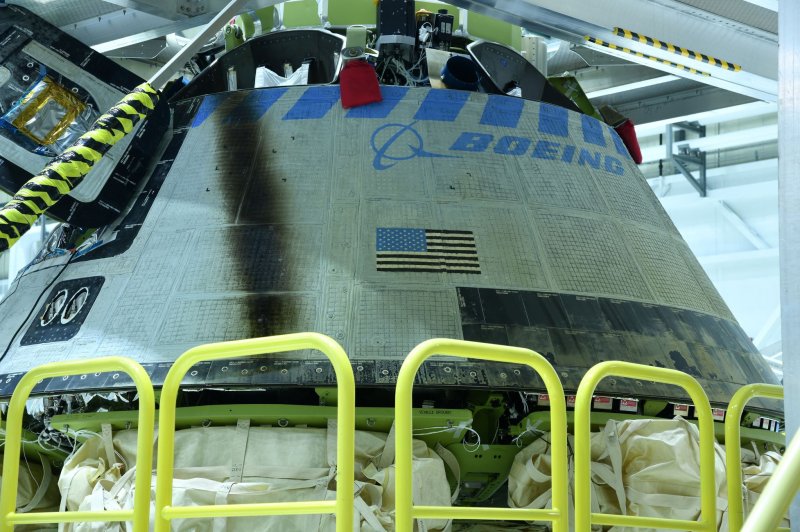1 of 2 | A Boeing Starliner spacecraft at Kennedy Space Center, Fla., following its launch and landing in December. Photo by Joe Marino/UPI |
License Photo
ORLANDO, Fla., Feb. 28 (UPI) -- Boeing's decision to break up tests of its Starliner space capsule flight software into segments was a major reason the craft failed to reach the International Space Station in December, company Vice president John Mulholland said Friday.
Boeing made the ill-fated decision to skip end-to-end software tests for the entire length of its Starliner space capsule flight to the International Space, breaking the flight into segments for testing instead.
One of the tests ended at the point where the capsule separated from Atlas V rocket, which meant they missed a flaw that caused the capsule to utilize erroneous data about the mission clock, he said.
"From a hindsight standpoint, it's very easy to see what we should have done because we uncovered an error," Mulholland said. "This is a tough business. It's a game of inches."
He said the decision to break up flight software testing was "definitely not a matter of cost," but was done because engineers thought it was logical to avoid running the entire flight at once -- which would have taken about 25 continuous hours of testing.
In the future, the company will run the full launch-to-docking scenario, and then another complete test from undocking to landing, Mulholland said.
NASA is preparing to announce the results March 6 of a two-month investigation by a joint, independent team into the flight failure.
The investigation comes as NASA is feeling pressure to stop relying on Russian Soyuz capsules to carry astronauts to the station.
Boeing and competitor SpaceX, are years behind schedule developing a new spacecraft to carry people. SpaceX successfully tested its Crew Dragon capsule last year in a flight to the space station, and is expected to launch astronauts before mid-2020.
Starliner was launched Dec. 20 without a crew, and the problem with its mission clock caused it to burn fuel needlessly. That meant it wasn't able to reach the orbit necessary to catch up with the space station.
Despite the problem, Boeing and NASA said the test mission accomplished most of its goals. Initial data showed the capsule was a safe environment in which to carry people.
However, investigations into the mission also showed additional software problems that could have caused a more catastrophic failure. Mulholland said the company still is working through the problems, but the longer tests would have detected them.
NASA said data from the uncrewed test flight is essential for certification, but other ways might exist to demonstrate the capsule's full capabilities.
"NASA is evaluating the data received during the mission to determine if another uncrewed demonstration is required," the agency said in January.
The probe also comes as a federal watchdog, the Aerospace Safety Advisory Panel, said NASA needs a new approach to investigating private contractors like Boeing and SpaceX. That's because NASA is relying more on those contractors than ever before.
The Starliner capsule that flew is being refurbished at the Commercial Crew and Cargo Processing Facility at Kennedy Space Center in Florida.















